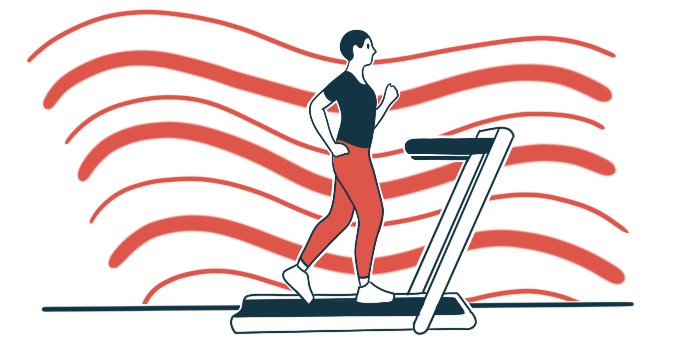Home exercise helps Parkinson’s motor symptoms: Analysis
30 exercise sessions over 8 weeks leads to moderate improvement

Home-based exercise, such as aerobic, strength, or balance exercises, helps relieve overall motor symptoms of Parkinson’s disease, according to a meta-analysis.
But benefits were only seen when patients exercised for a minimum of eight weeks, and no less than 30 times.
The findings provide “clinicians and patients with clear evidence-based clinical practice” for the benefits of home-based exercise, the researchers wrote in the study, “The effect of home-based exercise on motor symptoms, quality of life and functional performance in Parkinson’s disease: a systematic review and meta-analysis,” published in BMC Geriatrics.
Parkinson’s is marked by the death of nerve cells (neurons) that produce dopamine, a chemical messenger that plays a crucial role in transmitting signals to other neurons responsible for controlling body movements. This leads to a range of hallmark motor symptoms, including tremor, stiffness or rigidity, and difficulties with balance, that increase the risk of falling.
Exercise and physical activity are both well-established, non-pharmacological approaches for Parkinson’s disease. During the COVID-19 pandemic, the World Health Organization (WHO) launched a campaign to urge and help people to maintain their daily physical activity, mainly via at home-exercises. “However, the WHO recommendation does not specify the type and dose of exercise,” the researchers wrote.
Small but significant effects seen
To understand and assess the impact of home-based exercise on motor symptoms and functional performance in patients with Parkinson’s, as well as identify effective exercise types and regimens, the team of researchers in China searched five databases for published studies. The meta-analysis covered a total of 20 clinical studies involving 1,885 people with Parkinson’s (mean disease duration 7.3 years).
Exercise routines included aerobic exercise; balance and gait training; a combination of aerobic, strength, or balance exercises; and arm and hand exercises. The number and length of sessions differed markedly among studies, ranging from nine to 96 sessions over periods of three to 24 weeks. Training frequency was similar in most studies.
The influence of exercise on Parkinson’s patients was assessed during both the off phase, when symptoms are not effectively controlled by medication, and the on phase, when symptoms are managed through medication. One study also evaluated the effect of exercise in both on and off phases.
Home-based exercise led to a small but significant easing of overall motor symptoms, as well as improvements in quality of life, walking speed, and balance. Finger dexterity also improved, and patients were less afraid of falling.
A moderate improvement in overall motor symptoms was observed when patients engaged in home-based exercise for eight to 16 weeks, with a frequency of more than three times per week and a total weekly exercise time of at least two hours.
However, no significant effects were seen when home-based exercise was conducted for periods shorter than eight weeks or when the total number of sessions was fewer than 30.
The findings suggest that “home-based exercise appears to be effective in relieving motor symptoms and improving quality of life in [Parkinson’s disease] patients,” the researchers wrote. “We recommend that the exercise period is no less than 8 weeks and the total number of sessions is no less than 30 times,” they concluded.







